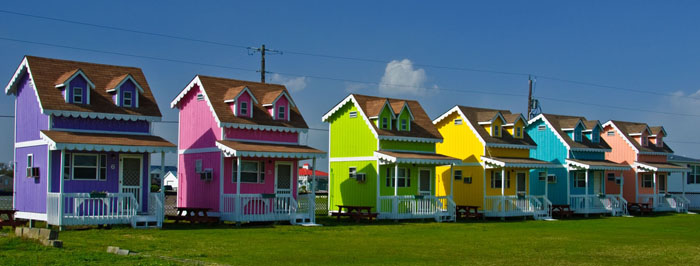by Denis Doucet
- Is a tiny house right for me?
- Reduce your debt ratio with a tiny house
- An affordable secondary home
- Where can I build my tiny house
- How can I reduce my utility bill
It’s a growing trend in the United States: tiny houses are winning the hearts of people who want to own a home at a low cost. In Canada, tiny houses are still a relatively new phenomenon; yet, more and more converts are discovering the benefits of owning a smaller home.
The biggest advantage? A tiny house can cost about $80 000, a small down payment and…a tiny mortgage!
Reduce your debt ratio
Tiny houses are small-size constructions (often less than 1000 square feet) built on a piles, stilts or concrete blocks. They do not have basements and are very affordable to build. Tiny houses appeal to people who want to save money and purchase an eco-friendly home.
In the United States, over three quarters of people who live in a tiny house have any mortgage to repay. This is a very convincing sales argument for promoters and is worth definitely its weight in gold. With an average family income, you can easily become a property owner without going into major debt.
A quality secondary home
Gone are the days when you had to buy a run-down cottage and repair over three summers before taking full advantage of it! A tiny house can be the springboard for affordable vacations—particularly if you rent it out for the rest of the year. Thanks to its small size and simple materials, a tiny house has very low maintenance costs.
Pay less every month
It is important to note that, despite their simplicity, tiny houses also have very low energy costs. They often feature solar panels. Because of their size, heating bills are substantially reduced (not having a basement to heat also helps!).
Because tiny houses are so affordable and practical, some groups associate them with voluntary simplicity or downsizing lifestyles. In fact, many people don’t even connect their property to municipal waterworks or local electricity providers; they are oftentimes completely self-sufficient.
A project that evolves over time
You can also invest in acquiring a larger piece of land on which you can build an original tiny house and then add “modules” over time to create your very own villa. And why not build an office that can be annexed to your first tiny house? With the right home equity line of credit or refinancing, several interesting options become available to you!
Tiny houses can also be perfect for growing families or to provide a home for an aging parent or an adult child that returns home after a few years away.
Be careful of municipal regulations
Before embarking on the tiny house bandwagon, don’t forget to do your research and find out where you can actually build your new abode. Several municipalities require a minimum land area to build any type of home. Your municipality’s service centre for building permits and urban planning will be able to guide you through the process.
- A tiny house can enable you to have a small mortgage.
- A tiny house is ideal if you’re looking for a secondary home.
- Talk to the urban planning service at your municipality to find out if building a tiny house is permitted.
- A tiny house is eco-friendly, requires little material and providers substantial energy savings.

